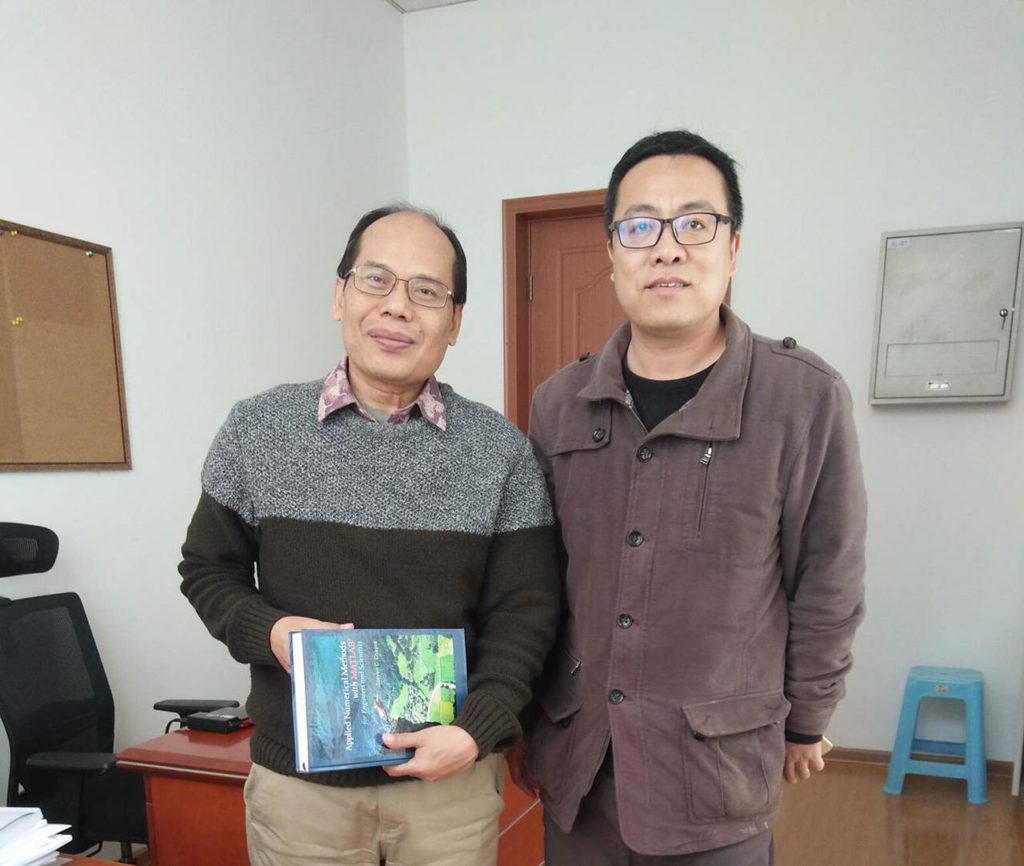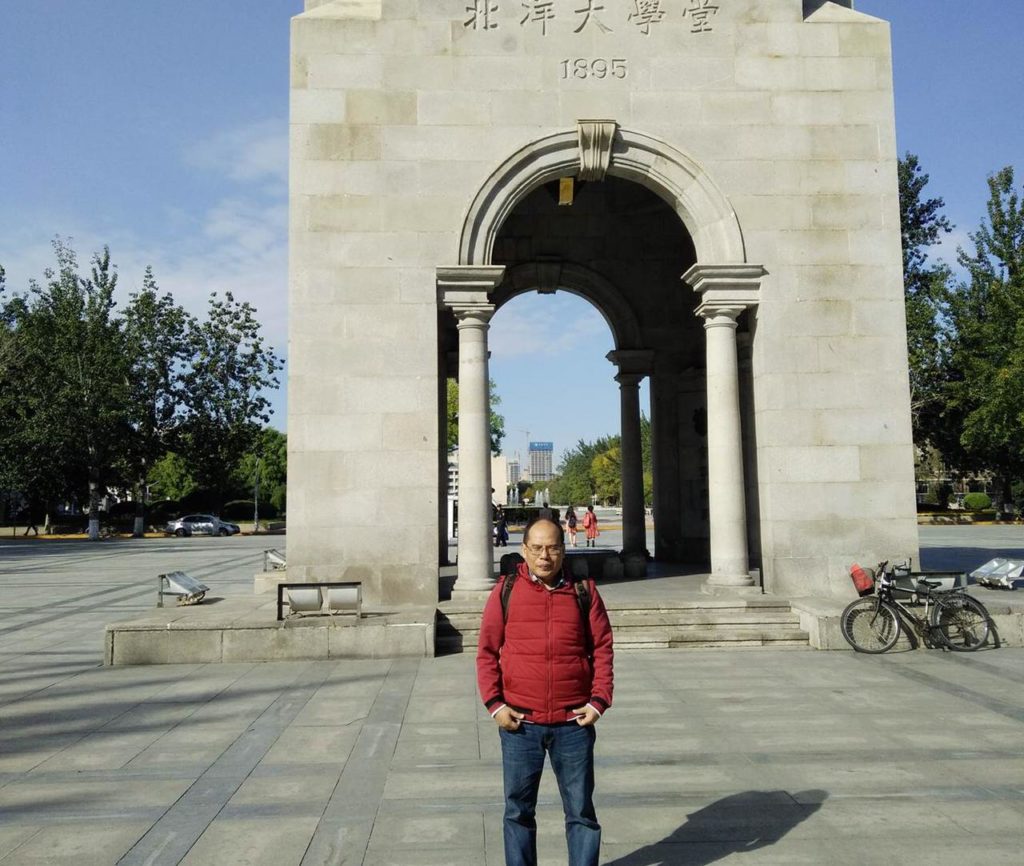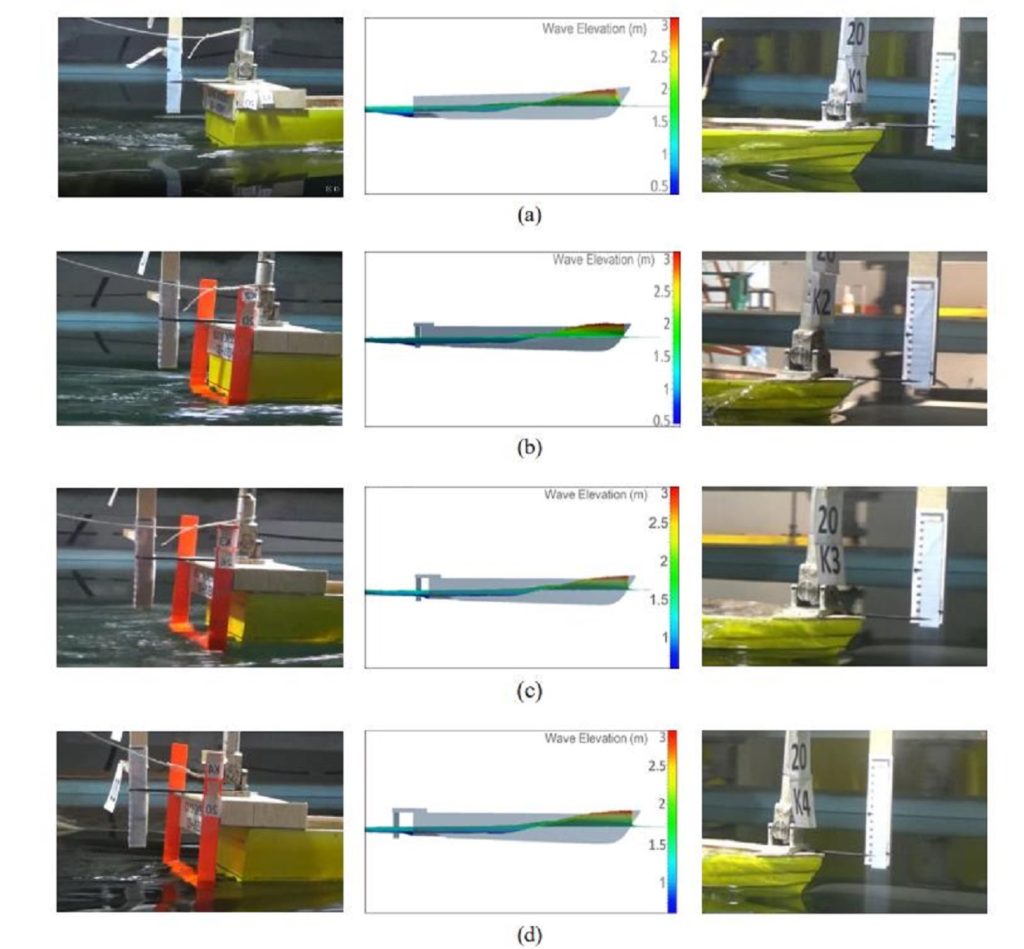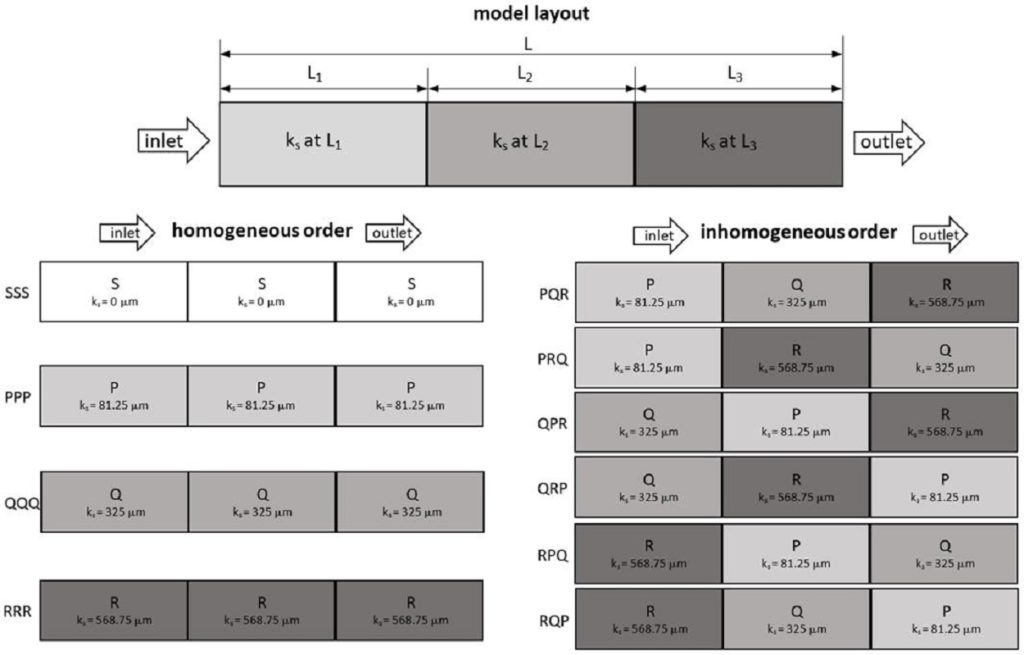ITS Professor Predicts Ship Resistance Using CFD

Prof. Dr. Ir, I Ketut Suastika MSc (left) when with Prof. Xuefeng Zhang from the School of Marine Science and Technology, Tianjin University, China, in December 2018.
ITS Campus, ITS News – The issue of greenhouse gas emissions is still widely discussed today. In this case, shipping also contributes to global carbon dioxide (CO2) emissions in line with the increasing industrial activity in shipping. That reason is what drives Prof. Dr. Ir I Ketut Suastika MSc, professor of the Institut Teknologi Sepuluh Nopember (ITS), to reduce ship fuel consumption by predicting obstacles using Computational Fluid Dynamics (CFD).
In his inaugural scientific oration on Wednesday (31/3), the lecturer, who is familiarly called Suastika, explained the results of his research entitled The Role of Computational Fluid Dynamics in Research and Innovation of Naval Architecture for the Advancement of the Nation. The research that led Suastika to become a professor discussed the application of CFD to reduce ship resistance, thereby reducing fuel consumption on ships.
CFD, or what we usually know as computational fluid dynamics, is a branch of fluid mechanics that applies numerical methods in studying the phenomenon of fluid flow. The ITS Naval Architecture and Shipbuilding Engineering Department lecturer revealed that the CFD software was chosen because it was considered more practical. “CFDs can be stored on one server and accessed anywhere. Besides, the experiments carried out are more cost-effective than physical testing,” said the man born in Klungkung, December 31, 1969.
The lecturer who deals in hydrodynamics explained that in its application, CFD is used to predict the size of ship resistance. According to Suastika’s statement, knowing the ship’s resistance is essential because it is closely related to the engine power needed to move the boat. “If we minimize obstacles, then we can use a smaller engine so that the pollution produced is not much,” he said.
Furthermore, this man, who has spent his life for 15 years in the Netherlands, explained that in general, this research is focused on two topics, namely the prediction of friction resistance due to inhomogeneous roughness and the application of vanes or hydrofoils as an energy-saving device on ships.

Prof. Dr. Ir, I Ketut Suastika MSc during a research visit to the School of Marine Science and Technology, Tianjin University, China, in October 2018.
Suastika explained the roughness of the hull could significantly increase drag. An example in practice is the presence of biofouling, which is a plant, shell, or marine animal attached to the hull of a ship. He also said that the spread of biofouling was uneven. Therefore the roughness was inhomogeneous. “The inhomogeneous roughness due to biofouling is modeled with CFD and is estimated to increase the resistance up to 80 percent,” he explained.
After modeling using CFD, results were obtained that caught Suastika’s attention. The first result is the effect of the order of roughness largely determines the final roughness. If it starts with high roughness, the resistance is higher. The second is that if the roughness pattern is the same even with different plate lengths, the resistance coefficient will remain. This is called the law of similarity. “I simulated with different plate lengths, namely 30, 60, 120, and 240 meters,” said the man from Bali.

Comparison of the visualization of wave patterns formed by the ship between experimental results in the laboratory and CFD simulation results
Also, the results show that if the flow crosses the roughness level suddenly, the local drag coefficient is overshoot. Conversely, if the roughness level decreases, there will be an undershoot. “This phenomenon is still an active and interesting object of the current study to be investigated,” said Suastika.
Not only that, in this research, Suastika also explained the use of vane or hydrofoil as an energy-saving device on ships, which also aims to reduce obstacles. After simulating using CFD, the results obtained are consistent with the experimental results in the laboratory. “This will be the direction of future research by developing vane control techniques using artificial intelligence (AI) technology,” he hoped.
In the end, Suastika said that as an archipelagic country, infrastructure development and enhancing maritime connectivity in Indonesia are priorities in national development. A good mastery of basic science and technology is needed to achieve this, such as fluid mechanics and CFD. “I hope the results of this research can be used in practice in the field of shipping for the advancement of the nation,” he concluded. (ITS Public Relations)

Pemodelan dan prediksi hambatan gesek akibat kekasaran tak-homogen yang diakibatkan oleh biofouling
Reporter : Megivareza Putri Hanansyah
Related News
-
ITS Wins 2024 Project Implementation Award for Commitment to Gender Implementation
ITS Campus, ITS News —Not only technology-oriented, Institut Teknologi Sepuluh Nopember (ITS) also show its commitment to support gender
March 30, 2021 18:03 -
ITS Professor Researched the Role of Human Integration in Sustainable Architecture
ITS Campus, ITS News –The developing era has an impact on many aspects of life, including in the field
March 30, 2021 18:03 -
ITS Sends Off Group for Joint Homecoming to 64 Destination Areas
ITS Campus, ITS News — Approaching Eid al-Fitr, the Sepuluh Nopember Institute of Technology (ITS) is once again facilitating academics who want
March 30, 2021 18:03 -
ITS Expert: IHSG Decline Has Significant Impact on Indonesian Economy
ITS Campus, ITS News — The decline in the Composite Stock Price Index (IHSG) by five percent on March 18,
March 30, 2021 18:03
